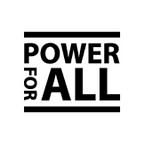Integrated Policy and Financing for DRE-enabled Livelihoods
– Anand Prabu Pathanjali
As the world gears up for a global economic recovery while still dealing with the pandemic, resilience and adaptation has been much talked about. This has also been used as a motto — Atmanirbhar Bharat — by Prime Minister Modi in May 2020 to boost morale and forge an economic recovery pathway for the country. With the livelihoods of tens of millions of daily wage labourers looming with uncertainty due to the crisis, being resilient is the need of the hour for local governments and grassroot organizations.
In the Murhu block of Khunti District in Jharkhand, about 25 daily wage women labourers, with assistance from grassroot organization, Life Education And Development Centre (LEADS), set up a safety mask and sanitary pad stitching unit powered by solar. A few years ago, these village women used to shuttle between various daily wage jobs earning as little as INR 2000–3000 per month. Last year, the organization was able to set up a raagi flour, pigeon pea, and pulse processing unit powered by 5 kw solar panels, that allowed it to run for 8–9 hours a day without the problem of power outages or voltage fluctuations. Today, there are 25 full-time women employees earning around INR 8000 per month, who are in charge of processing, packaging, and as well as tailoring.
A similar story emerges from Mahuadanr village in Latehar district, where jeera phool rice is not only grown organically but also dehusked and packaged using decentralized solar power. The women from both these villages have witnessed growth in their personal income, thereby increasing their family’s savings. The products are directly bought by the Jharkhand Rural Livelihood Mission (JSLPS) and retailed throughout the country. This is just one such example where integration of renewable energy in livelihood programs has reduced production uncertainty due to lack of electricity, increased income generation for women and eliminating the middlemen in the market value chain.
New Policy Framework to Promote DRE and Livelihoods
In late 2020, the Ministry of New and Renewable Energy (MNRE) introduced a new draft policy framework to create a conducive environment for the development and large-scale adoption of DRE-enabled livelihood applications. In this document, it is recognized that there have been enough pilots in the country in agriculture, agro-processing, dairy, poultry, fisheries, tailoring, and others, as well as established models to make these businesses financially viable and scalable. However, this is still only a small fraction of the overall spectrum of livelihood activities across the 600,000 villages in India. Be it in a state like Jharkhand or any other state, the need for larger cooperation and communication among the different departments is critical to see this framework succeed.
Even now, taking this forward and effectively implementing it is left to the State Nodal Agency (SNA) for renewable energy — JREDA, in the case of Jharkhand. There is need to not only upskill the SNAs, but also raise the technology awareness among other departments like the Ministry of Rural Development, the Ministry of Women and Child Development, the Ministry of Tribal Affairs, the Ministry of Small and Micro Enterprises, the Ministry of Textiles, the Ministry of Agriculture and Farmer Welfare, the Ministry of Food Processing, and the Ministry of Health. The onus must be on these ministries as well to incorporate DRE as part of all their programs in rural areas and for training and capacity building needs to be done at the district level.
Need for Integrated financing models for the end user
Investments in the renewable energy sector in India are at an all-time high, an assessment released by the Institute for Energy Economics and Financial analysis puts an estimated US$8.4bn for the year 2019–2020. This is at a national level, but at the district level these become irrelevant. Even among financiers, there still exists the notion of the relatively novel nature of the technology and lack of familiarity. They perceive these projects as higher risks in lending for solar-powered livelihood appliances. Low lender confidence is further exacerbated by the lack of market data, including details on deployments, the performance of those deployments, history of borrowers’ credit extensions, and servicing of loans for such products. Currently all of the pilots that have been financed are either through grants, CSR or via micro-financing through the SMEs. The report by CEEW on Financing Solar Powered Livelihoods in India finds that the investment in these livelihood products are attractive on average, with a simple payback period of 12–24 months on most occasions.
States have numerous budgets allocated under different departments for various programs, there are a lot of instances that these remain unused for years. The different departments should be working together to pool unused resources to boost DRE enabled livelihoods which in turn generates economic activity and creates jobs. The lack of public sector financing in enabling DRE is a crippling factor for most end users, when credit cards, LPG subsidy and phone banking have reached them. Bankability of technology is no more an excuse, when state livelihood missions are selling products made by such DRE enabled projects.
For a conducive environment for deployment of DRE enabled livelihoods, the need for better cooperation and resource pooling among the different departments along with active participation of public sector banks is the need of the hour.
